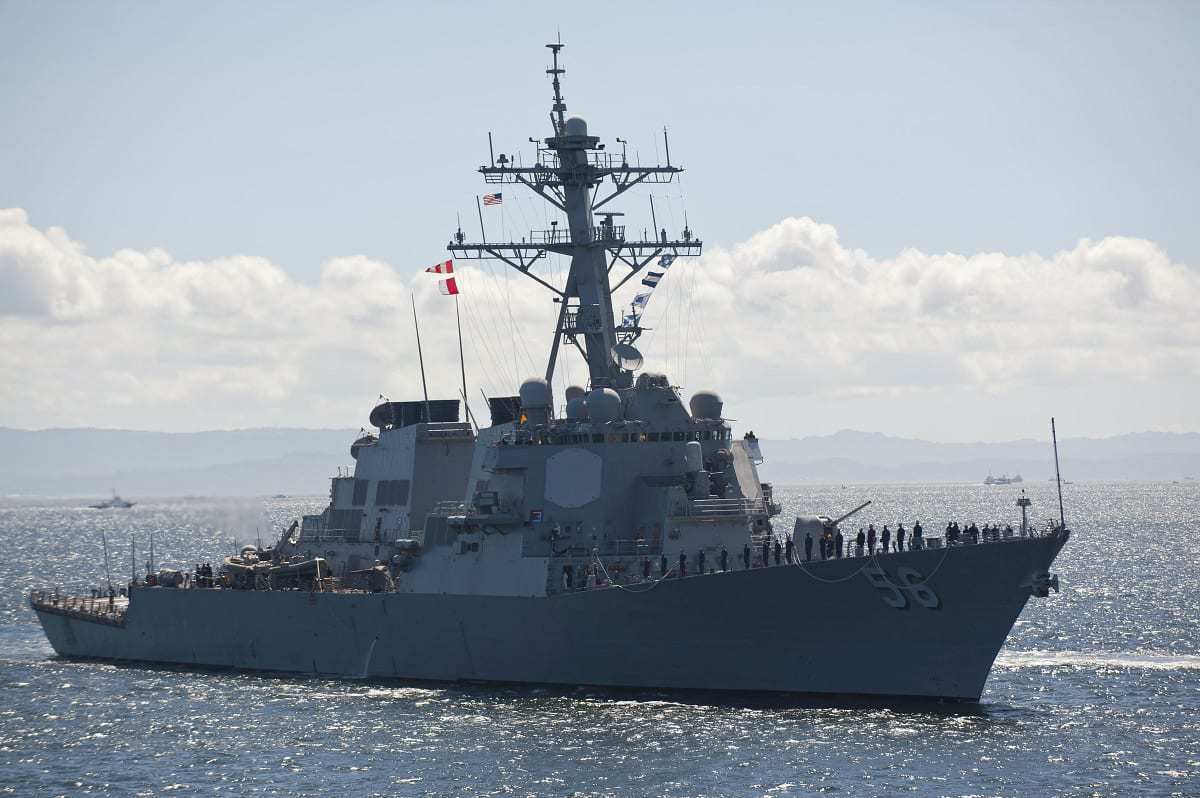Officials with the U.S. Navy have made it clear that they’d like to see some aging cruisers retired ahead of schedule, with a focus on additional destroyers. One panel of lawmakers is now apparently in agreement.
On Tuesday, the House Subcommittee on Seapower and Projection Forces Subcommittee announced that it would support the Navy’s goal to decommission its old cruisers and reinvest the money towards new ships.
The subcommittee said that its version of the National Defense Authorization Act (NDAA) would not stand in the way of the Navy retiring the older warships. The Navy has argued that the vessels should be retired ahead of schedule as the modernization efforts were becoming more expensive and more time-consuming – while at the same time the older platforms are not reliable or up to the task to address modern threats.
The service has asked to retire as many as seven cruisers in fiscal year 2022. Ten of the Navy’s 1980-era Ticonderoga-class cruisers underwent a modernization effort in the early 2000s, with an additional seven being updated in the past decade. However, even the upgraded cruisers have become costly to repair and maintain.
Instead of focusing on those aging warships, the Navy has sought to focus on newer vessels, and the house lawmakers seemed to be in agreement. The subcommittee’s mark of the Fiscal Year 2022 (FY22) defense policy bill, which was released on Tuesday, authorized eight “battle force ships,” including two Arleigh Burke-class guided-missile destroyers, two Virginia-class submarines, one Constellation-class frigate, one Navajo-class towing, salvage and rescue ship, one John Lewis-class fleet oiler and one T-AGOS(X) ocean surveillance ship.
Retire Rather Than Modernize
The Navy could now move forward with a plan to decommission as many as seven cruisers. It was in June that Vice Adm. Jim Kilby, deputy chief of naval operations for warfighting requirements and capabilities (OPNAV N9), told lawmakers that keeping those aging warships would cost the Navy $5 billion across the Future Years Defense Program (FYDP).
The seven cruisers the Navy wants to retire in FY-22 are USS San Jacinto (CG-56), USS Lake Champlain (CG-57), USS Monterey (CG-61), USS Port Royal (CG-73), USS Vella Gulf (CG-72), USS Hué City (CG-66) and USS Anzio (CG-68), USNI News reported.
The seapower subcommittee’s language contains “[N]othing that prevents the Navy from retiring the cruisers,” an aid for the House Armed Services Committee told reporters on Tuesday, according to Defense News.
“If you asked [subcommittee Chairman Joe] Courtney, he’s looked at this very closely: He’s listened to the Navy, he recognizes the capability that would be lost if we lose the cruisers, but in his mind, [with] the cruisers we really have not gotten the life extension that we hoped to get when we did the service life extension on the cruisers,” the aid added. “So it’s a very expensive bill: about $1.5 billion over the [five-year Future Years Defense Program] to even maintain just those two that were in the cruiser modernization plan. So Chairman Courtney is not of the opinion that we should be restricting those retirements.”
What Will the Senate Do?
The Navy may not want to strike the cruisers from the rolls just yet, as the Senate Armed Services Committee still has yet to release its full language of the NDAA. However, lawmakers in the Senate have already said in a summary that the bill “prohibits early retirement of Navy ships unless the Secretary of the Navy issues certain certifications to Congress.”
It is likely a compromise can be worked out, but the direction of the Navy could soon be determined by lawmakers in D.C. and it could impact the future fighting capabilities of the service for decades to come.
Peter Suciu is a Michigan-based writer who has contributed to more than four dozen magazines, newspapers and websites. He regularly writes about military small arms, and is the author of several books on military headgear including A Gallery of Military Headdress, which is available on Amazon.com.

